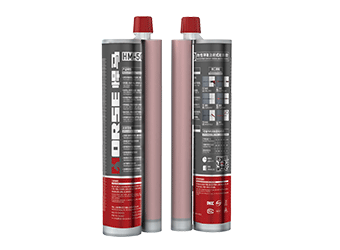Soluciones
La gama de negocios de construcción de caballos se extiende a todo el mundo y sirve a miles de clientes con productos, orientación técnica especializada en construcción, y somos testigos del reinicio de la marca china con ellos.
AFRP composites have a series of advantages, such as light weight, high strength, high modulus, good corrosion resistance, non-conductivity, good impact resistance and so on. Therefore, it has a very wide range of applications in bridge, tunnel, subway, harbor and industrial and civil construction projects, especially in the field of concrete structure reinforcement and repair.
In recent years, FRP has been widely used in the field of civil engineering reinforcement technology due to its advantages of high strength, corrosion resistance, small dead weight and convenient construction. The FRP composites commonly used in building structural engineering are mainly aramid fiber (AFRP), carbon fiber (CFRP) and glass fiber (GFRP), and their material forms are mainly sheet, bar and profile. All FRPs have some common properties: light weight, high strength, high elastic modulus, elasticity before breaking, low coefficient of thermal expansion, anisotropy, good corrosion resistance and durability, so they have great potential in building structural engineering applications. In addition, FRP composite materials have the advantages of low maintenance cost, free cutting, material saving and convenient construction. Although its early investment is large, its long-term investment is obviously better.
Aramid fiber AFRP composites have a series of advantages, such as light weight, high strength, high modulus, good corrosion resistance, non-conductivity, good impact resistance and so on. Therefore, it has a very wide range of applications in bridge, tunnel, subway, harbor and industrial and civil construction projects, especially in the field of concrete structure reinforcement and repair.
Comparison between AFRP reinforcement and other reinforcement methods
Externally bonded steel plate reinforcement
When reinforcing steel plate, the steel plate is usually attached to the outer edge of the stressed part of the reinforced bridge structure. At the same time, the cracks and defects of the paste part should be closed to constrain the deformation of concrete. However, we must pay attention to several points in adopting this method. First of all, the size of the steel plate is very strict, bending should be thin, to ensure that it and the original structure deformation coordination. Shear resistance should be thick, and anchorage should be made in the end of the steel plate to extend to the area of less stress, to prevent stress concentration damage to the bearing capacity of the structure. Secondly, after finishing, the cracks on the edge of the steel plate must be treated. Finally, it is also a long-term task to anticorrosion treatment of steel plates, so the overall cost is quite high. Moreover, its scope of use still has some limitations. It is usually used only in places where stiffness is very strict.
Expanded cross-section method
The principle of this method is to increase the load area and improve the bearing capacity of the structure. This method is usually used in some very small structures that do not require much clearance. The advantage is low cost. The disadvantage is that the weight of the original structure is increased while the clearance is reduced, the construction period is long, and there are great limitations. At present, the larger projects will not use it.
Externally bonded CFRP reinforcement
In the current FRP material reinforcement market, carbon fiber accounts for the largest proportion, its mechanism of action and our aramid fiber and other FRP composites are basically the same. The structure is reinforced by its advantages of light weight, high strength, high elastic modulus, good corrosion resistance and durability. Although it can withstand a great deal of static load, because carbon fiber is a brittle material, so if it is often subjected to dynamic load or impact, its strength can not be guaranteed to play. The ultimate failure mode of aramid fiber is plastic failure. In addition, carbon fiber is also a conductive material, so it is not suitable for high insulation requirements in electrified railway, subway and tunnel engineering. Aramid fiber with high strength and high modulus of elasticity does not have such limitations, but also its advantages. Aramid fiber cloth also has a great advantage in shear resistance, in the cutting must use a special ceramic scissors, pier reinforcement in general is also the use of aramid fiber excellent shear resistance.
Puede encontrar cualquier cosa que necesite, confíe en probar estos productos y encontrará la gran diferencia después de eso.

Tejido de fibra de carbono unidireccional de alta resistencia para refuerzo de compuesto de polímero reforzado con fibra (FRP).

Resina de anclaje epoxi, paquete de cartucho doble. Se inyecta en los orificios con la pistola dispensadora para plantar barras.

Adhesivo de refuerzo estructural para revestimientos de acero.